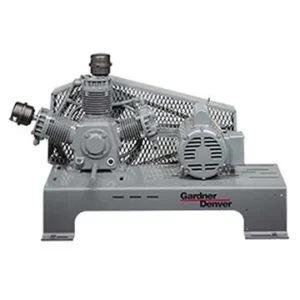 At Pye-Barker Engineered Solutions, we understand that a reliable compressed air system is the heartbeat of your operations. Our expert team specializes in crafting tailored compressed air system designs that optimize performance, maximize efficiency, and ensure your industrial processes run smoothly. Whether you're operating in manufacturing, construction, healthcare, or agriculture across Georgia, we’ve got your back.
At Pye-Barker Engineered Solutions, we understand that a reliable compressed air system is the heartbeat of your operations. Our expert team specializes in crafting tailored compressed air system designs that optimize performance, maximize efficiency, and ensure your industrial processes run smoothly. Whether you're operating in manufacturing, construction, healthcare, or agriculture across Georgia, we’ve got your back.
Every business has unique needs, and there's no such thing as a one-size-fits-all solution. That’s why at Pye-Barker Engineered Solutions, we pride ourselves on delivering customized compressed air system designs. Our engineers dive deep into your specific operational demands, environmental considerations, and industry regulations to design a system that seamlessly aligns with your goals.
From initial consultation to system commissioning, every step is executed with precision, ensuring maximum efficiency, reduced energy costs, and unparalleled reliability.
Step 1: Detailed On-site Assessment
The foundation of any successful compressed air system is a thorough understanding of your operational environment. Our experienced engineers visit your facility anywhere across Georgia and beyond, conducting a comprehensive site analysis. We evaluate factors including:
This hands-on approach ensures we gather the insights necessary to design an optimized system tailored specifically to your needs.
An efficient compressed air system is more than just a compressor. At Pye-Barker Engineered Solutions, we integrate industry-leading components to deliver a holistic and robust solution. Our comprehensive systems include:
A well-designed compressed air system demands proactive maintenance. At Pye-Barker Engineered Solutions, we offer comprehensive service plans tailored to your needs, keeping your system running smoothly with minimal downtime. Our expert technicians are available for:
Our proactive approach helps you avoid costly downtime, ensuring your operations run smoothly and efficiently.
At Pye-Barker Engineered Solutions, sustainability isn’t an afterthought—it’s embedded into every compressed air system design we create. By prioritizing energy efficiency and reducing environmental impact, we help your business:
With our energy-saving audits and continuous improvement practices, your compressed air system will not only meet current needs but also anticipate future industry standards and environmental regulations.
Our expertise spans a broad spectrum of industries, including:
We tailor every compressed air system design to address the unique requirements of each sector, ensuring reliability, compliance, and maximum productivity.
Our team proudly serves businesses across Georgia, from bustling Atlanta to Savannah, Macon, Augusta, Columbus, Athens, and beyond. Wherever you are, our commitment to excellence and personalized service ensures your compressed air system meets and exceeds your expectations.
Choosing Pye-Barker Engineered Solutions means partnering with industry-leading experts dedicated to boosting your operational performance and efficiency. With decades of experience, unmatched customer support, and innovative engineering solutions, we are your ideal partner in optimizing your compressed air systems.
Ready to transform your compressed air system into a high-performing asset? Contact Pye-Barker Engineered Solutions today and let’s get started!



Notifications